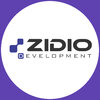
i
GKM
IT
Filter interviews by
GKM IT Sr. Wordpress Developer Interview Questions and Answers
GKM IT Sr. Wordpress Developer Interview Experiences
1 interview found
I appeared for an interview before Jul 2024, where I was asked the following questions.
- Q1. What is wordpress
- Ans.
WordPress is a popular open-source content management system (CMS) used for creating websites and blogs.
Open-source: WordPress is free to use and modify, allowing developers to customize it extensively.
User-friendly: It features an intuitive interface, making it accessible for non-technical users.
Themes and Plugins: Users can enhance functionality and design through thousands of available themes and plugins.
SEO-friendl...
- Q2. How can make a website faster and responsive
- Ans.
Optimize website speed and responsiveness through various techniques like caching, image optimization, and code minification.
Implement caching solutions like WP Super Cache or W3 Total Cache to reduce server load and speed up page delivery.
Optimize images using tools like Smush or Imagify to reduce file sizes without losing quality.
Minify CSS, JavaScript, and HTML files using plugins like Autoptimize to decrease load t...
Top trending discussions






Interview questions from similar companies

I applied via Company Website and was interviewed in Apr 2023. There were 5 interview rounds.

(1 Question)
- Q1. Detailed discussion on the projects worked on
(1 Question)
- Q1. Technical questions and answers
(1 Question)
- Q1. Face to face interview
(1 Question)
- Q1. General HR questions
Interview Preparation Tips
This is the correct place if yo want to gain more technical knowledge

I applied via Naukri.com and was interviewed in Jun 2024. There were 2 interview rounds.
It was of 75 minutes. And Questions are related from Quantitative, logical reasoning and Coding.
DSA Questions were asked there
Interview Preparation Tips

Sorry cant provide the details
(2 Questions)
- Q1. On Amazon Web Services
- Q2. On DEVOPS like Jenkins etc......
Interview Preparation Tips

I applied via Naukri.com and was interviewed in Sep 2021. There were 5 interview rounds.

I was asked about my writing experience, skills used, and what I can bring to the organization. The round was concise and seamless.
(1 Question)
- Q1. It was a relatively longer round with a string of questions being asked. Most of these questions were related to my capabilities to curate quality content, which could benefit the organization. I was also ...
(1 Question)
- Q1. This one was more of a get-to-know-you round where I was assessed based on my interactions and communication skills.
(5 Questions)
- Q1. What are your salary expectations?
- Q2. What is your family background?
- Q3. Why are you looking for a change?
- Q4. What are your strengths and weaknesses?
- Q5. Tell me about yourself.
Interview Preparation Tips

I applied via Naukri.com and was interviewed in Feb 2023. There were 4 interview rounds.

(2 Questions)
- Q1. Where are you based in?
- Q2. Briefly introduce yourself.
(2 Questions)
- Q1. Technical questions related to content writing.
- Q2. What is SEO in an article?
- Ans.
SEO in an article refers to the process of optimizing the content to rank higher in search engine results.
SEO involves using relevant keywords and phrases in the article
The article should have a clear structure and headings to make it easy for search engines to understand
Links to other relevant content can also improve SEO
Meta descriptions and tags should be used to provide a brief summary of the article
SEO helps to in...
(1 Question)
- Q1. Undersatnding the policies
Interview Preparation Tips
Skills evaluated in this interview

- Q1. What is Pipeline?
- Q2. What is the Jenkins and logs?

- Q1. What is CI/CD and how have you implemented it?
- Ans.
CI/CD stands for Continuous Integration and Continuous Deployment, streamlining software development and delivery processes.
CI involves automatically testing and integrating code changes into a shared repository, e.g., using Jenkins or GitLab CI.
CD automates the deployment of code to production, ensuring that new features are released quickly and reliably.
Implemented CI/CD pipelines using tools like CircleCI, where cod...
- Q2. What is the difference between DOCKER and a virtual Machine?
- Ans.
Docker uses containers for lightweight virtualization, while VMs use hypervisors for full OS virtualization.
Docker containers share the host OS kernel, making them lightweight and fast.
Virtual Machines (VMs) run a full OS, including its own kernel, which consumes more resources.
Docker starts in seconds, while VMs can take minutes to boot up.
Containers are portable and can run consistently across different environments,...

- Q1. How do you ensure high availability and scalability in CI/CD pipeline?
- Ans.
Implementing redundancy, automation, and monitoring ensures high availability and scalability in CI/CD pipelines.
Use load balancers to distribute traffic across multiple CI/CD servers, ensuring no single point of failure.
Implement container orchestration tools like Kubernetes to manage scaling and availability of CI/CD components.
Utilize cloud services (e.g., AWS CodePipeline, Azure DevOps) that offer built-in high ava...
- Q2. What is CI and CD?
- Ans.
CI (Continuous Integration) and CD (Continuous Delivery/Deployment) are practices that automate software development and release processes.
CI involves automatically testing and integrating code changes into a shared repository.
CD ensures that code changes are automatically deployed to production or staging environments.
Examples of CI tools include Jenkins, Travis CI, and CircleCI.
Examples of CD tools include Spinnaker,...

- Q1. What is cloud?
- Ans.
Cloud refers to on-demand computing resources and services delivered over the internet, enabling scalability and flexibility.
Cloud computing offers three main service models: IaaS (e.g., AWS EC2), PaaS (e.g., Google App Engine), and SaaS (e.g., Microsoft 365).
It provides scalability, allowing businesses to easily adjust resources based on demand.
Cloud services can be public (e.g., AWS, Azure), private (dedicated infras...
- Q2. What is the Pipeline and Server?
- Ans.
A pipeline automates the software delivery process, while a server hosts applications and services.
A pipeline consists of stages like build, test, and deploy, ensuring continuous integration and delivery.
Example: A CI/CD pipeline using Jenkins to automate testing and deployment of a web application.
A server is a physical or virtual machine that provides resources, data, services, or programs to other computers.
Example:...
GKM IT Interview FAQs
Tell us how to improve this page.
GKM IT Interviews By Designations
- GKM IT Content Writer Interview Questions
- GKM IT Devops Engineer Interview Questions
- GKM IT Social Media Executive Interview Questions
- GKM IT UI UX Developer Interview Questions
- GKM IT Front end Engineer Interview Questions
- GKM IT SEO Intern Interview Questions
- GKM IT QA Engineer Interview Questions
- GKM IT Operations Executive Interview Questions
- Show more
Overall Interview Experience Rating
based on 1 interview experience
Difficulty level
Duration
Interview Questions from Similar Companies
GKM IT Sr. Wordpress Developer Reviews and Ratings
based on 2 reviews
Rating in categories
|
Backend Developer
9
salaries
| ₹4.3 L/yr - ₹10.8 L/yr |
|
Senior Software Engineer
6
salaries
| ₹19.5 L/yr - ₹28 L/yr |
|
QA Engineer
5
salaries
| ₹4.8 L/yr - ₹6 L/yr |
|
Back End Engineer
5
salaries
| ₹8 L/yr - ₹8.6 L/yr |
|
Front end Engineer
5
salaries
| ₹4.9 L/yr - ₹9 L/yr |

Northcorp Software

Zidio Development

Accel Frontline

Elentec Power India (EPI) Pvt. Ltd.
- Home >
- Interviews >
- GKM IT Interview Questions










